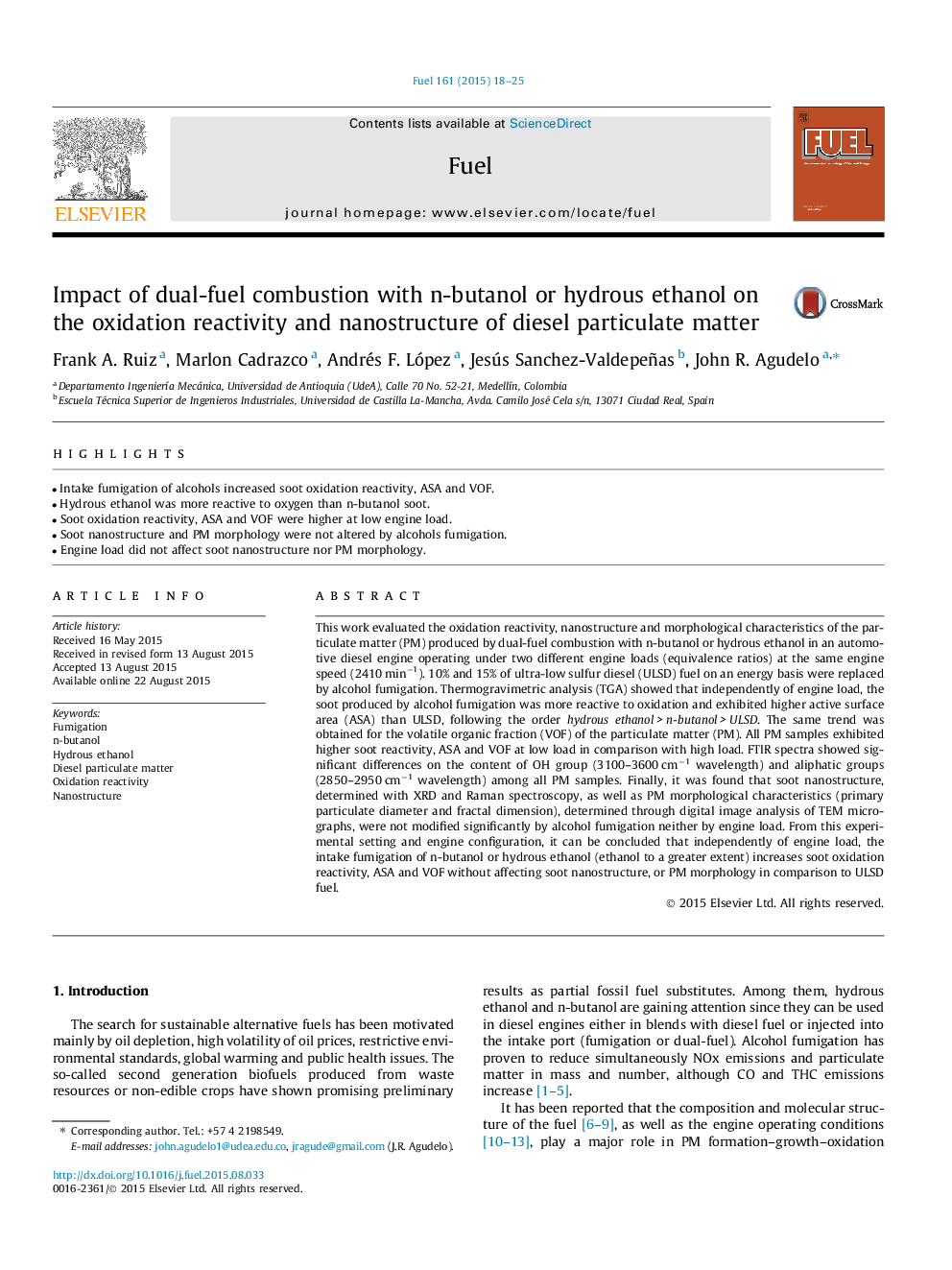| کد مقاله | کد نشریه | سال انتشار | مقاله انگلیسی | نسخه تمام متن |
|---|---|---|---|---|
| 205420 | 461109 | 2015 | 8 صفحه PDF | دانلود رایگان |

• Intake fumigation of alcohols increased soot oxidation reactivity, ASA and VOF.
• Hydrous ethanol was more reactive to oxygen than n-butanol soot.
• Soot oxidation reactivity, ASA and VOF were higher at low engine load.
• Soot nanostructure and PM morphology were not altered by alcohols fumigation.
• Engine load did not affect soot nanostructure nor PM morphology.
This work evaluated the oxidation reactivity, nanostructure and morphological characteristics of the particulate matter (PM) produced by dual-fuel combustion with n-butanol or hydrous ethanol in an automotive diesel engine operating under two different engine loads (equivalence ratios) at the same engine speed (2410 min−1). 10% and 15% of ultra-low sulfur diesel (ULSD) fuel on an energy basis were replaced by alcohol fumigation. Thermogravimetric analysis (TGA) showed that independently of engine load, the soot produced by alcohol fumigation was more reactive to oxidation and exhibited higher active surface area (ASA) than ULSD, following the order hydrous ethanol > n-butanol > ULSD. The same trend was obtained for the volatile organic fraction (VOF) of the particulate matter (PM). All PM samples exhibited higher soot reactivity, ASA and VOF at low load in comparison with high load. FTIR spectra showed significant differences on the content of OH group (3100–3600 cm−1 wavelength) and aliphatic groups (2850–2950 cm−1 wavelength) among all PM samples. Finally, it was found that soot nanostructure, determined with XRD and Raman spectroscopy, as well as PM morphological characteristics (primary particulate diameter and fractal dimension), determined through digital image analysis of TEM micrographs, were not modified significantly by alcohol fumigation neither by engine load. From this experimental setting and engine configuration, it can be concluded that independently of engine load, the intake fumigation of n-butanol or hydrous ethanol (ethanol to a greater extent) increases soot oxidation reactivity, ASA and VOF without affecting soot nanostructure, or PM morphology in comparison to ULSD fuel.
Journal: Fuel - Volume 161, 1 December 2015, Pages 18–25